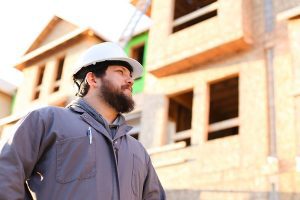In 2025, the next generation of home buyers may not be millennials or even Gen Z—it’s more likely to be baby boomers. In fact, baby boomers make up the largest share of home buyers in the US in 2025, according to the National Association of REALTORS® (NAR).
This puts builders in something of a bind. Do you focus on appealing to the largest share of homeowners or future generations when designing your homes? Do different generations share common needs or is everyone looking for something different?
Let’s look at the needs of baby boomers, Gen X, millennials, and Gen Z to set some expectations about what builders like you might consider going forward.
What Baby Boomers Want in New Homes
Across the country, one of the biggest things baby boomers look for in a home is proximity to family.
This desire has dovetailed with a common trend of older homeowners moving to the South and West for warmer weather, as some of the hottest housing markets in 2025 are focused in the South and West.
In addition to wanting to be closer to grandkids, baby boomers may also want to be closer to their children in case they find themselves in need of elder care.
Given these desires, builders may want to consider both kid- and elderly-friendly elements in new home designs. Space to play or move around, fewer stairs, and smaller homes overall are what boomers tend to look for.
If the idea of building smaller houses seems nonintuitive, consider this: According to NAR, half of all older boomers (age 70–78) and 40% of younger boomers (age 60–69) pay for their homes up front in cash.
What Gen X Wants
Gen X generally wants bigger homes, according to NAR. The reason for this is twofold:
- They have the money to afford bigger houses, with a higher median salary than any other generation.
- They need to house multiple generations under one roof.
That second point is especially interesting. NAR reports that 21% of Gen X home buyers chose a multifamily home for purchase. Such buyers may need to care for aging parents, adult children, or even grandchildren.
With so many different needs, Gen X home buyers will likely look for homes that can accommodate multiple needs—from easy movement for the young and old to technological upgrades to make life within the home easier.
Another element to consider is whether open floor plans are always the right call. While open floor plans are still generally popular, walls and personal spaces are making a comeback.
Between COVID lockdowns sealing people indoors for years at a time and the growth of multi-generational housing, it’s little wonder why semi-open floor plans are increasing in popularity.
You Build it, We'll back you up.
Learn why so many builders enroll their homes in the 2-10 New Home Warranty Program.
What Millennials Want
A break.
According to NAR, millennial homeownership fell from 38% in 2024 to 29% in 2025. And it’s not necessarily because they’re aiming too high in their home search.
According to the NAHB, millennial buyers are willing to make sacrifices in home size to find a home they can afford. That same article found that millennials will take a smaller, feature-rich home over a larger home if the price is the same.
And building trends flesh this desire out, with builders generally building smaller homes over the past few years. In fact, the NAHB discovered, “The median home size dropped from 2,200 square feet in 2023 to 2,150 square feet in 2024—the lowest in 15 years—after holding strong at 2,300 square feet from 2019-2022.”
Putting aside affordability—which everyone wants but has been a tough nut to crack—millennials will likely gravitate toward the following in a new home:
- Technology that makes things easier to do (e.g., smart technology integration)
- Extended living space outside of the home (e.g., patios and decks)
- High-quality amenities (e.g., private bathrooms, higher-end appliances)
What Gen Z Wants
Though Gen Z homebuying trends are still in their infancy (the oldest Gen Z-er was born in 1997, making them 27 years old, tops), the biggest trend that larger builders have found is that Gen Z home buyers want flexibility.
Digital technology is a huge part of Gen Z’s desire for flexibility. Gen Z is the first entirely digitally native generation of home buyers, which implies that most home buyers will have a need (or at least a burning desire) to have the ability to always be online.
This could translate to an expectation for things that previous generations consider luxuries:
- Smart and USB outlets
- Appliances they can control with their phones
- Dedicated space for Being Online (podcasting, gaming, content creating)
Finally, homebuilding experts believe that authenticity is more important to Gen Z than any other generation. They expect authenticity in home design (e.g., designs that are “of the time” rather than timeless or out-of-date) and in the customer care experiences they expect.

How 2-10 Helps You Help All Generations
One thing all generations want in a home is affordability. As builders implement strategies to make homes more affordable on the front end, 2-10 Home Buyers Warranty (2-10) helps address affordability on the back end of the homebuying process.
When builders enroll their homes in the 2-10 New Home Warranty Program, they help protect their homeowners against expensive structural defects in the home, which could cost up to $70,000 per defect according to 2-10’s internal research.
Additionally, the 2-10 New Home Warranty Booklet offers performance guidelines that help you set expectations with homeowners about who’s responsible for what related to the home’s construction. This can help you provide more positive experiences for your homeowners.
Finally, with program enhancements like 2-10’s Front Line Warranty Service—and its evolution, 2-10 NewHome Care—you can offer better post-closing experiences for your clients.








